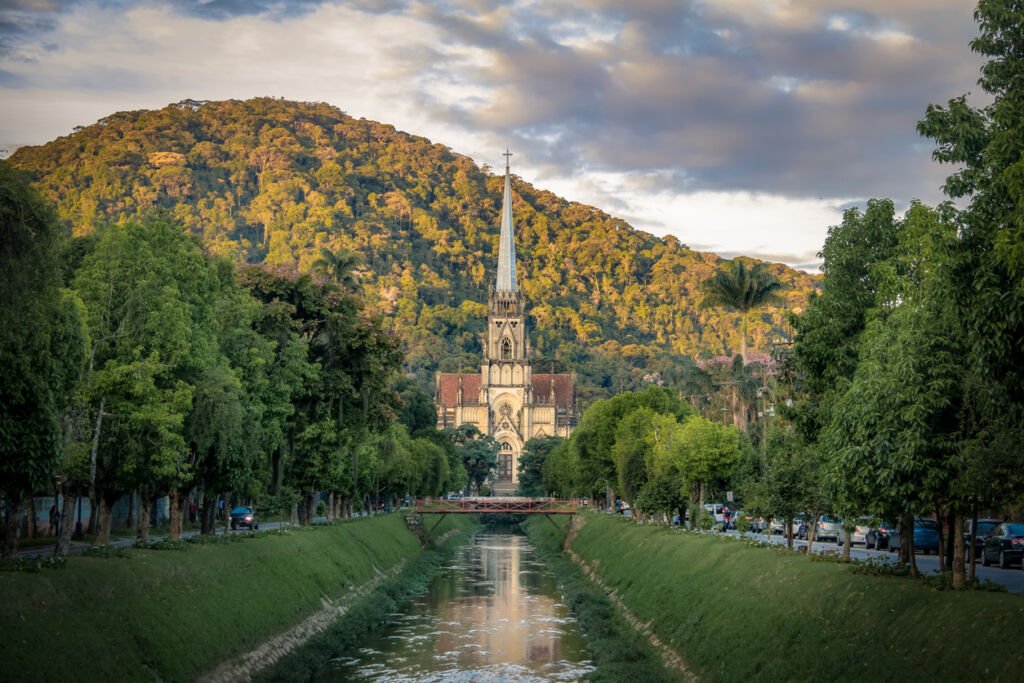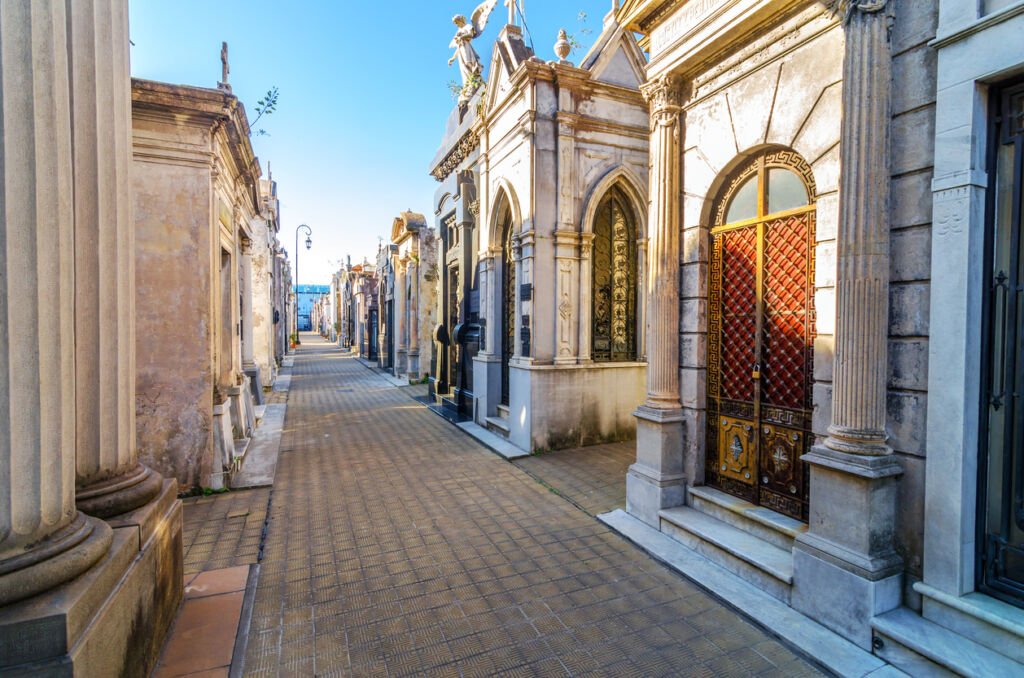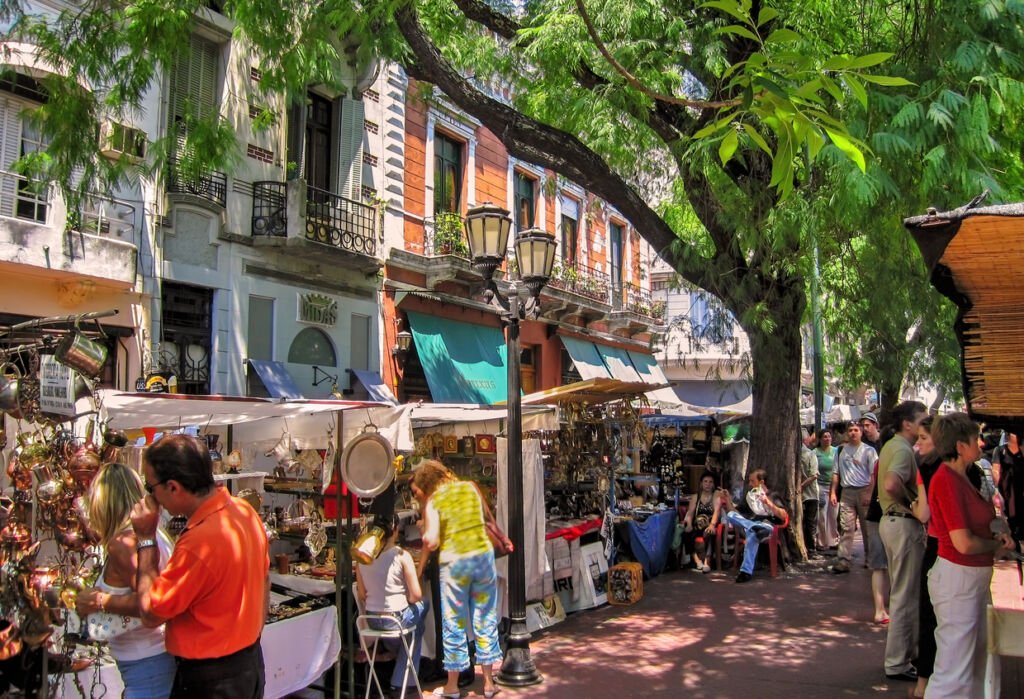Buenos Aires vs Rio de Janeiro: An Honest Comparison To Help You Choose
|
Prefer listening over reading? We got you covered!
Getting your Trinity Audio player ready...
|
If you’re planning a visit to South America and want to visit one of the continent’s largest and most exciting cities, Buenos Aires and Rio de Janeiro are sure to be around the top of your list. The former is the capital and largest city of Argentina, while the latter is Brazil’s second-biggest city, with both of them being home to several million people.
As well as boasting big populations, Buenos Aires and Rio de Janeiro are also major business, culture, and tourism centers for their respective countries, with lots of amazing landmarks to admire and fun things to do. In short, if you want to see the best that either Brazil or Argentina have to offer, these are the cities to visit.
But which one should you choose? Should it be Buenos Aires, the stylish Argentine capital, famed for its distinctive dynamism and energy, with European-style architecture and thrilling live entertainment? Or would you have a better time in sleepless Rio, with its carnival atmosphere, boisterous locals, and gorgeous beaches?
Well, it’s not an easy choice to make, but this guide is here to help you. Below, we’ll take a deep dive into Buenos Aires vs Rio de Janeiro, exploring everything that makes these cities great and listing some of their key differences in elements like food, nightlife, and affordability. By the end, you should find it much easier to choose your next South American destination.
Contents:
- A Quick Overview Of Buenos Aires vs Rio de Janeiro
- Which Has The Best Weather?
- Which Is Best For Activities?
- Which Is Best For Beaches?
- Which Is Best For Nightlife?
- Which Is Best For Shopping?
- Which Is Best For Food?
- Which Is Best For Families?
- Which Is Best For Couples?
- Which Is Best For Backpackers?
- Which Is Cheapest?
- Where To Stay According To Your Budget
- Buenos Aires vs Rio de Janeiro: Which Is Better?
Wandering Our World’s Ten-Second Comparison:

A Quick Overview Of Buenos Aires vs Rio de Janeiro
Buenos Aires: A Quick Overview

Buenos Aires is the capital city of Argentina, situated on the western shore of the La Plata River, not far from the border with Uruguay. It’s the country’s largest city, with a total population in excess of 3.1 million people, though more than 15.6 million live in the full metropolitan area, which extends across 1,837 square miles.
The history of Buenos Aires, which translates to “Fair Winds” from Spanish, goes back to the 1500s. Spanish explorer, Pedro de Mendoza, established the first settlement in the area in 1536, though indigenous peoples fought back against the European settlers for several decades, slowing the city’s development.
Eventually, Europeans took full control of the area and built up Buenos Aires over time, with the city enjoying strong trade links across South America and beyond. However, in the early 19th century, Argentina’s War of Independence effectively began in Buenos Aires, changing the course of the country’s future.

These days, Buenos Aires is the perfect symbol of modern, independent Argentina. It’s the country’s leading business hub, as well as a multicultural melting pot of ideas and people from across the globe. Dynamic, surprising, and unpredictable, it’s a one-of-a-kind location with much to love, from its rich culture and fine food to its eclectic architecture and lively vibes.
Rio de Janeiro: A Quick Overview

Rio de Janeiro, which means “River of January” in English is the second-biggest city in Brazil, after Sao Paulo. It’s located in the country’s southeast region, on the coast. Over 6.7 million people live in Rio, with more than 12.2 million in its metropolitan area, which covers a total of 1,759 square miles, quite similar in size to Buenos Aires.
Similarly to Buenos Aires, Rio’s history began in the 16th century. It was then that Portuguese settlers came to the area and formed the first settlement, though various indigenous peoples, like the Tupi and Puri, had lived on the land for many years before. In the centuries that followed, the city became hugely important to the Portuguese Empire.
At one stage, Portugal’s royal family even relocated to Rio to flee from Napoleon’s conquest of Europe, and Rio actually served as the capital of Portugal for a time. Then, once Brazil became independent in the 1800s, it continued to be one of the richest and most significant cities in South America, with a powerful economy and strong tourism sector.

In fact, Rio is one of the most-visited cities in South America by far, famed for its wild carnival celebrations and iconic beaches, such as Copacabana. This city is also well-known for its extraordinary landmarks, like the famous Christ the Redeemer statue, Sugarloaf Mountain, and the legendary Maracana Stadium, giving visitors lots of things to see and do.
Which Has The Best Weather?

Weather-wise, there’s a notable difference between Buenos Aires and Rio de Janeiro. Both cities enjoy warm summers (which run from December through February), but Rio has much more consistent warmth all year long. Even if you visit during the traditional winter months, you’ll still find it to be dry, sunny, and warm enough to wear shorts and T-shirts.
In contrast, it gets much cooler in Buenos Aires during the Southern Hemisphere’s winter. So, if you want non-stop sunshine and the hottest temperatures for days at the beach, Rio is the place to be. Just remember to note that Rio tends to get quite a lot of sudden storms and rainy spells during the peak of summer, with Buenos Aires being a little drier overall.
Which Is Best For Activities?
Rio and Buenos Aires are both action-packed, fun-filled cities with lots to see and do. Whether you’re into shopping, dining, beaches, museums, galleries, live entertainment, or something in between, you can find it all in either of these two locations. Let’s take a look at some of the best things to do in both cities and see how they compare.
Buenos Aires: The Activities

One of the best ways to understand a city is to visit its most famous landmarks, and Buenos Aires has some of the quirkiest sightseeing spots in South America. Arguably the most famous site is the 19th century La Recoleta Cemetery, where many former presidents and famous Argentinians are laid to rest, like Eva Peron.
The La Chacarita Cemetery is another curious spot to visit. Or, for something a little less morbid, head to the gorgeous El Ateneo Grand Splendid, a former theater that is now one of the most decorative bookstores on the planet. Cafe La Biela is another must-see, once a popular haunt of famous Argentine writers, Borges and Casares.
There are also plenty of terrific museums and grand galleries dotted across Buenos Aires, like the Museo Nacional de Bellas Artes or Museo de Arte Latinoamericano, along with grand green spaces like the Tres de Febrero Park, buzzing markets like San Telmo, and quirky, characterful districts like colorful La Boca and arty El Caminito.

Sport, dance, and live entertainment are all crucial ingredients in the Buenos Aires melting pot. So, before you leave, you may also like to catch a soccer game at the city’s legendary Bombonera stadium, take in (or take part in) a tango session either out in the street or one of the city’s dance halls, or stop by any of the city’s dozens of music venues.
Rio de Janeiro: The Activities

When it comes to sightseeing, there are few cities that can match Rio in terms of raw, jaw-dropping landmarks. And there are few landmarks in the world that come close to the city’s Christ the Redeemer statue. Standing almost 100 feet in height, this statue is located atop Mt Corcovado and can be accessed in various ways, such as via a jungle trek or scenic train ride.
While the statue may be the most iconic Rio landmark, it’s far from the only one. Visitors may also like to check out the legendary Maracana soccer stadium, as well as the breathtaking Museum of Tomorrow, with its neo-futurist exterior and fascinating exhibits. Speaking of museums, Rio’s Museum of Modern Art is also fantastic and well worth checking out.
For outdoor enthusiasts, Rio is also a great city. Families can take it easy at Parque Lage, the vast green space that was once a 19th century private estate, while those in search of a challenge could trek (or ride a cable car) to the top of Sugarloaf Mountain. Rio also boasts gorgeous botanical gardens, along with its own national park – Tijuca – filled with hiking trails, waterfalls, caves, and more.

Rio’s also well-known for its amazing beaches, with gorgeous sands only a short walk from the city center, as well as its lively samba dancing – visitors can catch a performance or even take part in a dance workshop at places like the Palacio de Samba. There are also many charming and quirky spots around the city to walk, like Pedro do Sal, or “Little Africa” to the locals.
Overall, there’s clearly much to do and much to love about both Buenos Aires and Rio de Janeiro. The former has more of a European vibe, with its enchanting architecture, diverse neighborhoods, and excellent museums. The latter is livelier and more outdoor-oriented, with beaches, hiking trails, and more dramatic sights.
Which Is Best For Beaches?

Given that both Buenos Aires and Rio de Janeiro are by the coast, you may also want to spend some time on the beach during your visit to either of these cities. Of the two, Rio is much more commonly associated with sea and sand, thanks to its legendary balneario beaches, but Buenos Aires still has some fine sandy spots of its own, though they’re not quite as accessible.
No visit to Rio can be complete without basking on the sands of Copacabana. One of the most famous beaches in the world, this place is perfect for sunbathing, water sports, and even parties in the evening. For something more chic and chilled out, try Ipanema. Or, if you love to surf, head to Joatinga. There are even secret, secluded beaches to discover, like Prainha, and great sunset-watching spots, like Arpoador.
Unfortunately for beach lovers, Buenos Aires doesn’t exactly have any sandy spots of note within its city limits. Instead, you’ll have to leave the city behind and explore the Buenos Aires Province to find pleasant seaside locations like upscale Pinamar and Carilo or cozy and romantic Mar Azul.

Overall, there’s not much of a contest in this category. Rio is obviously the better city to visit if you want to spend lots of time soaking up the sun’s rays or dipping your feet in the water. In contrast, travelers shouldn’t expect easy access to the beach in Buenos Aires – instead, you may have to travel several hours to reach a nice sandy space.
Which Is Best For Nightlife?

Nightlife is a big part of the culture in South American countries like Argentina and Brazil, with countless people of varying ages staying out late, partying, dancing, and singing until the early hours. Therefore, the nightlife scenes in both Buenos Aires and Rio are pretty impressive, but which one takes the crown when it comes to after-dark entertainment?
Well, there’s no doubt that Rio is one of the liveliest cities on Earth, Its downtown Lapa area never seems to sleep, with live music and a long list of nightclubs to check out. There are even massive street parties here pretty much every weekend. Alternatively, you could head to Pedra do Sal for samba dancing or Copacabana for beach parties and seafront bars.
Palermo is Buenos Aires’ answer to Rio’s Lapa. It’s the heart of the city’s nightlife scene, where you can find trendy bars, thumping nightclubs, and even secret speakeasies. For dancing, hit up one of the city’s milongas (tango houses), and for something a little more relaxed, check out the historic San Telmo streets.

Overall, both cities are excellent when it comes to nightlife, with more than enough bars and hangouts to while away the night-time hours. Rio is perhaps a little livelier, but also rawer and slightly less safe in the evenings, while Buenos Aires is thrilling, fun, and diverse.
Which Is Best For Shopping?

With Buenos Aires and Rio both ranking among the biggest cities in all of South America, they’re also fantastic places to shop, with malls, department stores, markets, and more. In either city, shopaholics will find plenty of stores and interesting souvenirs to take back home, but which one is best for shopping?
Well, Buenos Aires has the unique distinction of boasting more bookstores than pretty much anywhere else on the planet, as well as some of the prettiest, like the aforementioned El Ateneo Grand Splendid. The Argentine capital also has vast department stores, along with handcraft boutiques, stylish clothes shops, outlet malls, eco-friendly galleries, street markets, and more.
Not to be outdone, Rio is also a shopper’s delight, with multiple areas filled up with markets, boutiques, malls, and more. Trendy Ipanema is a great place to look for luxury fashion and accessories, for instance, while Barra de Tijuca has multiple mega malls with lots of stores to explore. For something a little more laid-back, head to Saara, Rio’s largest open-air market.

Overall, both cities are highly impressive in the shopping stakes, and shopaholics are sure to adore either one. However, Buenos Aires has a slight edge, as it’s easier to get around and offers slightly more diversity in its store selection.
Which Is Best For Food?

Food is another major highlight when you visit a super South American city like Rio de Janeiro or Buenos Aires. Both of these cities serve up some of the most flavorful traditional dishes of their respective nations, and both of them have quite diverse menus to choose from, with culinary styles from across the globe.
Well, this is one area where Buenos Aires really steals the show. It’s got one of the best restaurant scenes in the whole of South America, with an amazing mixture of awesome Argentine specialties, like world-class steak and sweet dulce de leche, along with incredible Italian food, like pizza and pasta, from the city’s Italian immigrant population.

Rio has some terrific tastes to offer, too, like the city’s signature dish: purple bean feijoada. There are many meals here that are particularly filling and hearty, typically consisting of delicious meat, flavorful veggies, rice, beans, and sauces, along with great drinks, especially cocktails like caipirinha.
Overall, Buenos Aires has the more delicious and diverse cuisine, but you can still eat very well in Rio.
Which Is Best For Families?

Planning a family vacation to South America? If so, Buenos Aires and Rio are absolutely two of the top cities to consider. Kids of almost any age can appreciate either one of these cities, as they both have lots of fun things for families to see and do. However, you might find one of them to be a little more family-friendly than the other.
Rio has the big benefit of being by lots of large, family-friendly beaches where kids and grown-ups alike can sunbathe, play games, or swim in the sea. Kids are also sure to be amazed by Rio’s landmarks, like Christ the Redeemer and the Museum of Tomorrow, and active families will enjoy having lots of hiking trails and mountains right nearby.
Buenos Aires has the benefit of being easier to get around and slightly safer, as well as a little less chaotic than Rio. It also has fun family attractions, though arguably caters best to families with older kids who may enjoy the city’s beautiful bookstores, vast parks, and wonderful European-style architecture, as well as its many museums.

Overall, it all depends on your family’s tastes and preferences. Those who love beaches and outdoor adventures, or those with very young children, should probably pick Rio. For families with teens or those who prefer cultural activities and a slightly more laid-back atmosphere, head to Buenos Aires instead.
Which Is Best For Couples?

Couples, too, can have a magical time exploring either Buenos Aires or Rio de Janeiro and enjoying the very best that either Argentina or Brazil has to offer. Both cities boast romantic spots, awesome accommodation, and fine dining for all those romantic evening meals, but which is the best to visit with someone special beside you?
Well, of the two, Buenos Aires is arguably the more romantic choice. It has a distinctly European feel to it, with wonderful architecture around every corner and many cozy, cute, winding streets, lined with quirky shops and hidden gems. The food here is also exquisite, ideal for evening meals with your partner, and there are many gorgeous green spaces to walk hand-in-hand.
At the same time, Rio is also a top-notch destination for couples, boasting iconic “bucket list” landmarks that many people dream of seeing, like Christ the Redeemer. Couples who love the beach will also appreciate Rio’s sandy shores, and the lively, wild vibes of this place make it particularly appealing for younger travelers.

Overall, it’s tough to call a winner, once again. Buenos Aires is more traditionally romantic, but Rio has more dramatic surrounding scenery and may be more appealing to adventurous couples.
Which Is Best For Backpackers?

Backpackers can also have the time of their lives roaming around Buenos Aires or Rio de Janeiro. Both cities are welcoming to adventurers, with lots of friendly locals to greet you and so many attractions and activities to fill up your travel itinerary. However, one city may be a little more appealing and accessible to backpackers than the other.
A lot of travelers agree that Buenos Aires is the more comfortable of the two cities to backpack around. It’s cheaper in general, as well as being a little easier to traverse, with safer streets, particularly in the evenings. All of this should appeal to the average backpacker, and many people will enjoy discovering the city’s museums, shops, and other unique attractions.
While it might be a little rawer and wilder, Rio can still be a fun place to go backpacking. Many of the locals here are incredibly friendly and happy to welcome visitors from around the world, and there’s lots to see and do for people of all tastes, from hikers to history enthusiasts. It’s just a bit more expensive and not quite as straightforward to find your way around.

Overall, for first-time or inexperienced backpackers, Buenos Aires is the best choice. If you’ve got a bit of backpacking experience already (or if you speak Portuguese) you can have a memorable adventure in Rio.
Which Is Cheaper?

Price is also a key factor for many travelers to take into account when trying to decide between two or more potential destinations. Fortunately, both Rio de Janeiro and Buenos Aires are relatively cheap when compared to some of the world’s more high-end cities, and one of them is slightly cheaper than the other.
And it’s Buenos Aires which tends to have the more affordable prices across the board for things like accommodation, food, and public transport. So, if you’re traveling on a budget or if you just want to get the very best value for money during your time in South America, the Argentine capital is the place to go.
Where To Stay According To Your Budget
Buenos Aires
Budget: Konke Buenos Aires Hotel captivates with its elegant charm. Adorned in sophisticated design, the hotel boasts luxurious interiors, blending modern aesthetics with timeless beauty. From the chic lobby to the tastefully appointed rooms, each space exudes an atmosphere of refined allure, offering guests a truly enchanting experience in Buenos Aires.
Luxury: Algodon Mansion in Buenos Aires epitomizes opulence and beauty. This luxurious haven showcases exquisite architecture, harmonizing classic elegance with contemporary sophistication. From lavish suites to stunning common areas, every corner exudes refinement. Guests are enveloped in a world of refined luxury, creating an unforgettable experience in the heart of Buenos Aires.
Rio de Janeiro
Budget: Lagune Barra Hotel in Rio de Janeiro is a masterpiece of beauty. Set against the backdrop of lush greenery and serene waters, the hotel’s contemporary design harmonizes seamlessly with nature. Immerse yourself in luxury, surrounded by stunning landscapes, where every detail reflects the enchanting allure of Rio de Janeiro’s natural splendor.
Luxury: Copacabana Palace, A Belmond Hotel in Rio de Janeiro, is an epitome of timeless elegance. Its grand facade, adorned with iconic palm trees, exudes opulence. Within, luxurious interiors seamlessly blend classic and contemporary aesthetics, offering guests a glamorous retreat. Overlooking Copacabana Beach, it’s a breathtaking haven where beauty meets sophistication
Buenos Aires vs Rio de Janeiro: Which Is Better?

Overall, it’s easy to see why Buenos Aires and Rio de Janeiro both rank among the most-visited and most-beloved cities in all of South America. They’re rich, exciting, dynamic places, with thrilling cultural activities and distinctive Latin flair. But, for various reasons, you might not be able to see both on the same trip. So, which should you visit first?
Well, it’s a really tough call. However, if we look back over this guide, one city wins in a couple more categories than the other. And it’s Buenos Aires that claims the crown. Boasting the better food and shopping, combined with less crime, more museums and cultural activities, and more romantic vibes, it’s a super destination for almost any kind of traveler.
At the same time, Rio is still one of the most terrific cities in the world and a must-see for those who want to experience the best that South America has to offer. With its gorgeous beaches, surrounding mountains, hiking trails, and spectacular samba and carnival culture, it’s a one-of-a-kind destination, perfect for adventurous souls.






